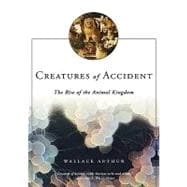
Note: Supplemental materials are not guaranteed with Rental or Used book purchases.
Purchase Benefits
What is included with this book?
| Preface | p. ix |
| Hand Luggage Only | p. 3 |
| The Biased Buddhist | p. 15 |
| Sandcastles and Their Children | p. 21 |
| A Deafening Silence | p. 40 |
| Cork Prisons | p. 55 |
| Building a Castle of Cells | p. 67 |
| Dances with Genes | p. 79 |
| Life Through Time | p. 89 |
| The Embryo Wars | p. 101 |
| Darwin and His Legacy | p. 114 |
| Possible Creatures, Probable Creatures | p. 126 |
| Duplicate and Diversify | p. 136 |
| The Best Box of All | p. 150 |
| From Simple to Complex | p. 161 |
| From Complex to Even More Complex | p. 112 |
| Acquiring Your Head | p. 183 |
| Crossing the Threshold | p. 194 |
| Dinosaur Blues | p. 205 |
| Beyond Pluto | p. 216 |
| Big Questions | p. 225 |
| Glossary | p. 233 |
| Further Reading | p. 241 |
| Acknowledgments | p. 243 |
| Index | p. 245 |
| Table of Contents provided by Ingram. All Rights Reserved. |
The New copy of this book will include any supplemental materials advertised. Please check the title of the book to determine if it should include any access cards, study guides, lab manuals, CDs, etc.
The Used, Rental and eBook copies of this book are not guaranteed to include any supplemental materials. Typically, only the book itself is included. This is true even if the title states it includes any access cards, study guides, lab manuals, CDs, etc.
Excerpted from Creatures of Accident: The Rise of the Animal Kingdom by Wallace Arthur
All rights reserved by the original copyright owners. Excerpts are provided for display purposes only and may not be reproduced, reprinted or distributed without the written permission of the publisher.